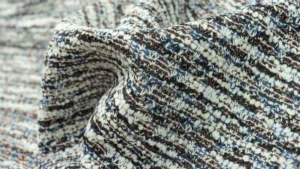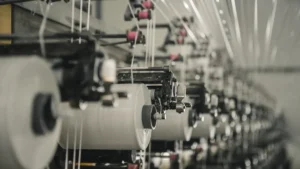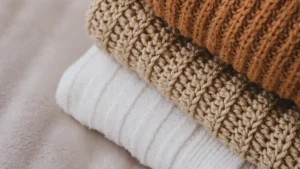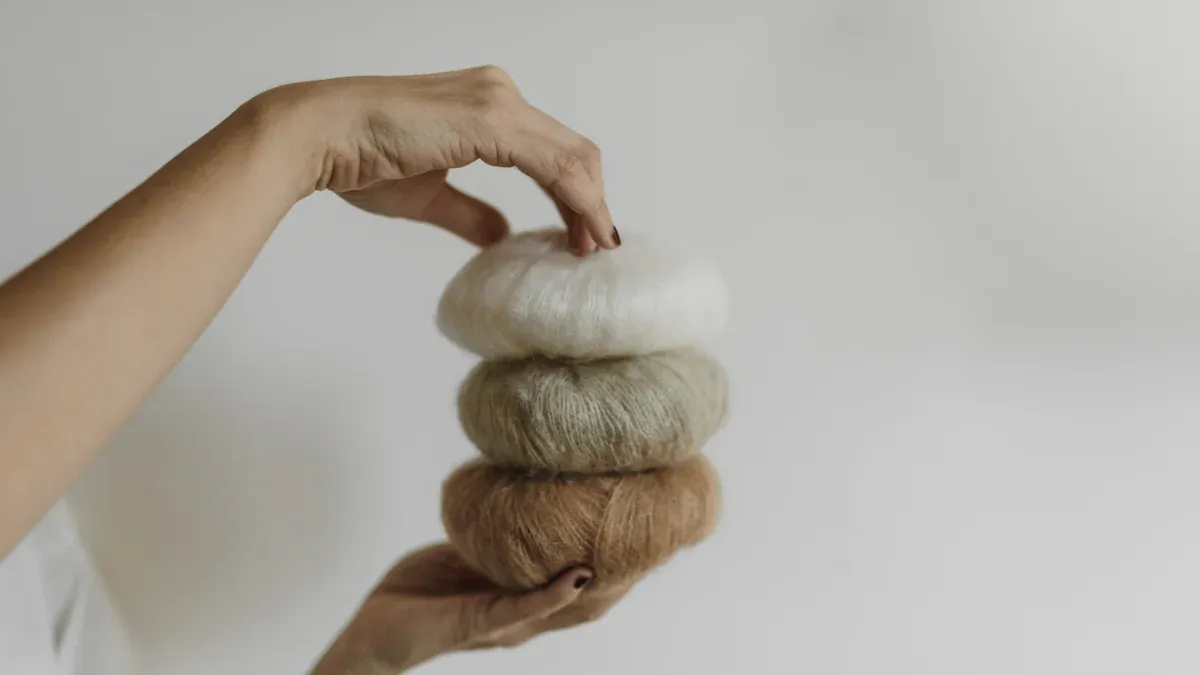
Choosing the right fiber for knitwear can be challenging for many buyers. Should they go with mohair because of its shiny appearance, cashmere for its soft feel, or alpaca for its warmth? Choosing the right fiber depends on what matters most: softness, warmth, durability, environmental impact, or cost. Many people prefer natural fibers because they feel comfortable and allow air to circulate. Increasingly, more buyers are focused on fibers that are eco-friendly and produced ethically. This shift influences current market trends. The chart below illustrates the global value of luxury yarns such as wool, cashmere, alpaca, and mohair.
Key Takeaways
Picking the right fiber changes how soft, warm, strong, and nice your knitwear feels and looks. Think about what is most important for your project. Mohair is shiny, strong, and does not wrinkle. It is good for fancy clothes that last a long time. Cashmere is very soft and warm. It needs gentle washing and careful buying to help the planet. Alpaca is soft and warm too. It does not cause allergies and is good for the earth. It is great for daily use and for people with sensitive skin. Try to find labels like Fairtrade, GOTS, and RMS. These show the fibers come from good and safe places.
Why Fiber Choice Matters
Product Quality
The fiber you pick changes how good knitwear is. Good fibers make clothes that last a long time. For example, cotton fiber quality is checked by its length, strength, and evenness. These things change how strong and tough the yarn is. The USDA has a system to check these traits. This helps makers create clothes that look nice and last longer. When brands use better fibers, their knitwear feels fancy and can handle daily use.
How a sweater or scarf feels is called “hand feel.” This depends on more than just the fiber type. Softness, bendiness, and smoothness all matter. Scientists say fiber structure is important too. If fibers line up well and have space between them, air moves through better. This makes the fabric comfy and lets it breathe. These things help knitwear stay nice and cozy, even after many wears.
Picking the right fiber means you must think about comfort, strength, and looks. This choice changes how people see the product and how long it will last in their closet.
Key Criteria
When picking luxury yarns for knitwear, buyers should look at some key things:
Fiber fineness: Thinner fibers feel softer and look shinier.
Fiber length: Longer fibers make yarns stronger and stretchier.
Color consistency: Even color helps dyeing and gives a smooth look.
Smoothness and cleanliness: Clean, smooth fibers are easier to use and make even fabrics.
Elasticity: Stretchy fibers help clothes keep their shape and feel comfy.
Purity: Fewer bad bits mean softer, better yarns.
Origin and breed: Where the fiber comes from changes its natural traits.
Natural properties: Things like warmth, breathability, and wrinkle resistance make knitwear better.
If brands know these things, they can pick the best fibers. This helps them make products that stand out in the market.
Mohair
Properties
Mohair comes from the Angora goat. This fiber stands out for its smoothness and resilience. Mohair fibers are long, fine, and elastic. These qualities help garments keep their shape and resist wrinkles. The fiber has a natural sheen, often called a “halo effect,” which gives knitwear a shiny and soft look. Mohair contains α-keratin, just like wool and cashmere, but it feels smoother and less spongy than wool. The fiber’s structure allows air to move through, making it breathable and comfortable. Mohair also takes dye well, so it can show bright, rich colors.
Smooth and glossy surface
High elasticity and strength
Lightweight with good insulation
Less itchy than regular wool
Pros and Cons
Mohair offers many advantages for knitwear. It is warmer than most fibers because of tiny air pockets inside each strand. The fiber is strong and durable, even stronger than steel of the same size. Mohair resists pilling and felting, so garments last longer and look new for years. The fiber is less likely to cause itching, making it a good choice for people with sensitive skin. Mohair is also more durable than cashmere and holds its shape better.
However, mohair can cost more than regular wool but is usually less expensive than cashmere. It needs gentle care, such as hand washing or dry cleaning, to keep its shine and softness. Some people may find mohair slightly prickly if the fiber is not the finest grade.
Note: Kid mohair, the softest type, is often used in luxury apparel for extra comfort.
Best Uses
Mohair works well in many types of knitwear. Its warmth and light weight make it perfect for sweaters, cardigans, vests, hats, scarves, and gloves. The fiber’s glossy sheen adds elegance to garments. Mohair’s strength and elasticity help socks and hats keep their shape. Because it resists wrinkles and pilling, mohair is a smart choice for long-lasting, stylish knitwear. Many designers use mohair for both everyday and luxury pieces, especially for cold-weather clothing. The fiber’s softness and shine make it popular in high-end fashion and accessories.
Cashmere
Properties
Cashmere comes from the soft undercoat of cashmere goats. The fibers are very thin and light, which makes cashmere feel soft. Each fiber has a smooth outside and a hollow middle. This helps it stay warm and lets air move through. Cashmere can soak up a lot of water, so it feels good in many places. The fiber can stretch and keeps its shape well. Cashmere feels smooth and nice on your skin. It is softer but more delicate than mohair and alpaca. Cashmere fibers are shorter and finer than those other fibers. Cashmere comes in white, gray, tan, and black. Most cashmere is dyed to make it look stylish.
Cashmere fibers are softer and finer than mohair and alpaca.
The fiber is light, stretchy, and lets air pass through.
Cashmere comes from goat undercoats, mohair from Angora goats, and alpaca from alpacas.
Cashmere is loved for its soft feel and warmth.
Pros and Cons
Aspect | Pros | Cons |
|---|---|---|
Softness & Comfort | Very soft, does not itch, and feels nice | N/A |
Insulation & Breathability | Much warmer than sheep wool; keeps you dry | N/A |
Weight & Durability | Light and strong if you care for it | Needs gentle care to stop damage |
Natural Colors | Pretty natural shades; easy to color | N/A |
Sustainability | Natural, can be renewed, and breaks down easily | Too many goats can hurt the land |
Animal Welfare | Goats roam free and shed their coats naturally | Some ways of combing can upset goats; care for animals is not always the same |
Economic & Trade | Helps herders earn money | Middlemen get most profits; herders may stay poor |
Maintenance | N/A | Needs hand washing, cool water, and flat drying |
Tip: Always wash cashmere by hand in cool water. Lay it flat to dry. This keeps it soft and helps it last longer.
Best Uses
Cashmere is great for clothes that touch your skin. Sweaters, scarves, shawls, and hats made from cashmere feel soft and warm but are not heavy. Many people pick cashmere for fancy things like blankets, gloves, and robes. The fiber lets air move, so you feel good in cold or mild weather. Cashmere is light, so you can wear it under coats or jackets. Good cashmere keeps its shape and softness for years if you take care of it. Mixing cashmere with other fibers, like merino wool or viscose, can make it stronger and cheaper but still soft and warm. Cashmere is a top pick for anyone who wants comfort, style, and warmth in knitwear.
Alpaca
Properties
Alpaca fiber is special because it is soft, warm, and strong. There are two main types: Huacaya and Suri. Huacaya fiber is bouncy and stretchy, so it is good for knitwear. Suri fiber is shiny and smooth, which is nice for thin fabrics. Baby alpaca fiber comes from the clean back of adult alpacas and feels extra soft.
Alpaca fiber is light and lets air move through tiny holes.
The hollow middle keeps air inside, so it keeps you warm.
Alpaca does not have lanolin, so it is good for people with allergies.
The fiber soaks up water, so you stay dry and comfy.
Alpaca is softer than sheep’s wool and almost as soft as cashmere, but it costs less.
Property | Description |
|---|---|
Softer than sheep’s wool, so it feels fancy | |
Warmth | Keeps you warm without being heavy |
Lightweight | Easy to wear in layers |
Hypoallergenic | No lanolin, so it is gentle for sensitive skin |
Durability | Strong, stretchy, and keeps its shape |
Sustainability | Good for grasslands and safe for the environment |
Pros and Cons
Alpaca fiber has many good things for knitwear. It is soft, warm, and lasts a long time. The fiber does not get fuzzy and keeps its shape, especially when mixed with other fibers. Alpaca costs less than cashmere and mohair, so it is a good deal for fancy clothes. Because it has no lanolin, it is less likely to bother your skin or cause allergies. Alpaca is also good for nature because alpacas are gentle on the land.
But alpaca can lose its shape faster than some fibers like Merino wool unless it is mixed. It is not as soft as cashmere, but it still feels nice. Some clothes may feel heavy if made with thick alpaca yarn.
Tip: Wash alpaca knitwear by hand in cool water and lay it flat to dry. This keeps it soft and helps it keep its shape.
Best Uses
Alpaca fiber is great for many kinds of knitwear. Sweaters, shawls, tunics, hats, and fingerless gloves all feel warm and soft with alpaca. The fiber is light and lets air move, so you can wear it all day. The hollow fibers keep you warm but do not make clothes bulky. Alpaca is good for people with sensitive skin or wool allergies because it does not have lanolin.
Alpaca yarn works with needle sizes 3-5mm, which is good for warm shawls and hats.
The fiber is smooth, so it does not itch much and feels comfy.
Alpaca makes stitches look fluffy and is good for big stitches and colorful patterns.
Alpaca knitwear is fancy, comfy, and strong, so it is a smart pick for both everyday and special clothes.
Other Luxury Yarns
Luxury knitwear uses many special fibers beyond mohair, cashmere, and alpaca. Each fiber brings its own look, feel, and benefits. Some fibers add shine, others give extra warmth, and some make garments last longer. The table below shows the main features of several popular luxury fibers:
Fiber | Distinguishing Characteristics |
|---|---|
Silk blends | Shine, smoothness, and strength; adds drape and luster when mixed with wool. |
Merino | Very soft, springy, and holds shape well; fine fibers make it gentle on skin. |
Angora | Extremely lightweight and warm; hollow core traps heat; often blended for strength. |
Yak Wool | Soft like cashmere, warmer and denser; excellent for cold weather; wicks moisture. |
Acrylic/Mohair | Soft, warm, and light; acrylic adds durability and keeps colors bright. |
Camel Hair | Soft, warm, and natural tan color; used in coats and sweaters. |
Vicuña | One of the softest and rarest fibers; very warm and light; prized for luxury coats. |
Silk blends
Silk blends add shine and smoothness to knitwear. Silk makes garments drape nicely and feel cool on the skin. When blended with wool, silk gives extra strength and a glossy finish. Designers often use silk blends for elegant shawls, summer tops, and cardigans that need a soft, flowing look.
Merino
Merino wool feels soft and springy. Its fine fibers make it gentle for sensitive skin. Merino holds its shape well and resists wrinkles. People choose merino for everyday sweaters, base layers, and baby clothes because it is both comfortable and durable.
Angora
Angora comes from rabbits. It is very light and warm because of its hollow fibers. Angora often gets blended with wool to add strength and reduce shedding. This fiber works well for cozy hats, scarves, and soft sweaters.
Yak Wool
Yak wool is soft like cashmere but even warmer. It feels silky and keeps heat close to the body. Yak wool also wicks away moisture, so it stays dry and comfortable. People use yak wool for winter hats, mittens, and thick sweaters that need extra warmth.
Acrylic/Mohair Blends
Acrylic blended with mohair creates yarn that is soft, warm, and light. Acrylic helps garments keep their color and shape. These blends are good for affordable, easy-care knitwear that still feels luxurious.
Alpaca
Alpaca fiber is soft, warm, and hypoallergenic. It works well for people with sensitive skin. Alpaca holds its shape and resists pilling, making it a smart choice for scarves, hats, and sweaters.
Cashmere
Cashmere is famous for its softness and warmth. It feels gentle against the skin and looks elegant. People often use cashmere for luxury sweaters, scarves, and accessories.
Camel Hair
Camel hair is soft and warm with a natural tan color. It is often used in coats and sweaters for a classic, timeless look.
Vicuna
Vicuña is one of the rarest and softest fibers in the world. It is very light and warm. Vicuña is used for the most luxurious coats and scarves.
Tip: Choose yak wool or silk blends for special projects that need extra warmth or a shiny, elegant finish. Use merino or acrylic/mohair blends for everyday wear that needs to last.
In-Depth Comparison of Mohair, Cashmere, Alpaca, and Other Luxury Yarns
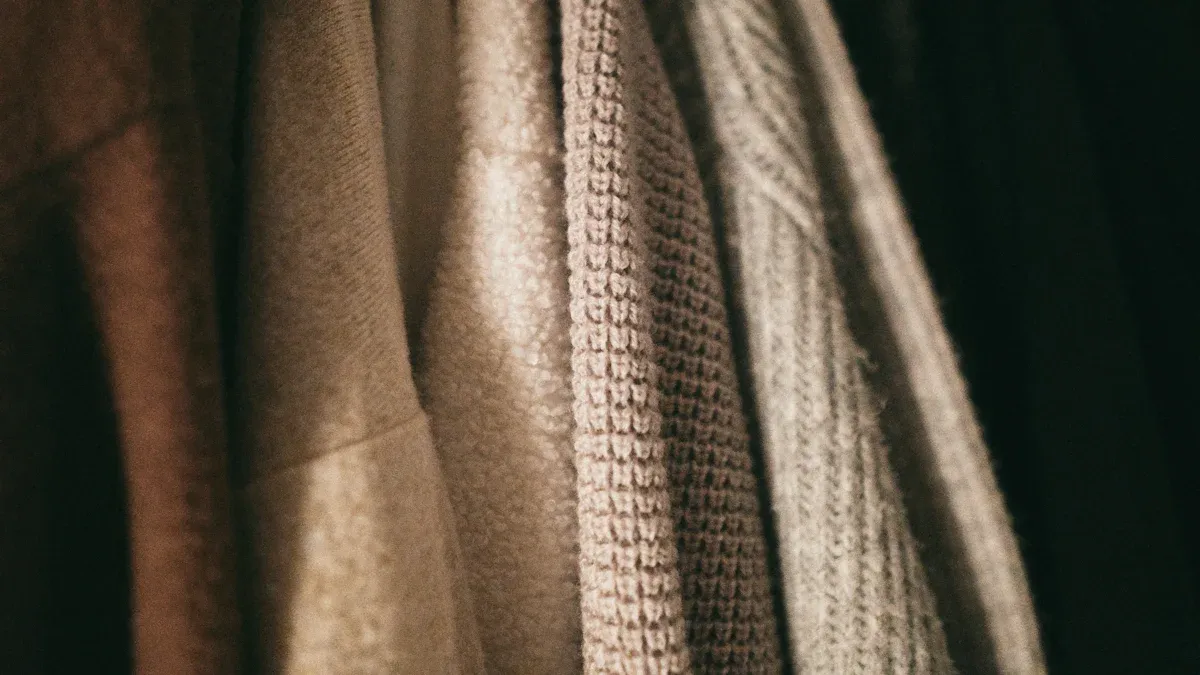
Choosing the Right Fiber
Picking the best fiber for knitwear means thinking about many things. Every luxury yarn has good points and bad points. Some fibers feel softer. Others last longer or keep you warmer. Buyers want to know which fiber is best for them. The answer depends on what you care about most. You might want softness, warmth, strength, eco-friendliness, price, or easy care.
Cashmere is known for being soft and warm. It feels light and gentle on your skin. Many people pick cashmere for fancy sweaters and scarves.
Alpaca is also soft and warm. Its hollow fibers trap heat and help with moisture. Alpaca is strong and does not pill much. This makes it good for clothes you wear a lot.
Mohair is shiny and strong. It does not wrinkle or pill easily. Mohair keeps its shape and gives knitwear a special shine.
Other fibers like merino, yak, and angora have their own perks. Merino is warm and easy to find. Yak is soft and tough. Angora is very soft but not as warm as others.
Lab tests show cashmere and angora are the softest. Alpaca and yak are soft too and have strong fibers. How warm a fiber is depends on its structure. Alpaca and merino are great for warmth. Angora is softer but not as warm. Yak and alpaca are the strongest and last the longest.
Price matters too. Cashmere costs the most. Alpaca and mohair are cheaper. Each fiber needs different care. Cashmere needs gentle washing and careful handling. Alpaca is easier to care for and lasts longer if you use it often. Mohair needs gentle care but is strong if you treat it right.
Tip: Think about how you will use the garment before picking a fiber. If you want luxury and softness, cashmere is best. If you want strength and easy care, alpaca is a smart pick. If you want shine and shape, mohair is a great choice.
Table: Mohair, Cashmere, Alpaca, Others
Fiber | Softness | Warmth | Durability | Sustainability | Price (per yard) | Care Needs | Best For |
|---|---|---|---|---|---|---|---|
Mohair | Soft, less itchy | High | Very strong | Moderate, animal welfare concerns | $20 – $50 | Hand wash or dry clean | Shiny sweaters, hats, long-lasting knits |
Cashmere | Ultra-soft | Very high | Delicate, pills | Moderate, land impact | Gentle hand wash, flat dry | Luxury sweaters, scarves, next-to-skin wear | |
Alpaca | Very soft | High | Strong, resists pilling | High, low impact | $30 – $70 | Hand wash, easy care | Everyday wear, sensitive skin, outdoor knits |
Merino | Soft | High | Good | Moderate | $10 – $30 | Machine or hand wash | Base layers, baby clothes, casual knits |
Angora | Extremely soft | Moderate | Delicate, sheds | Moderate | $40 – $100 | Gentle hand wash | Soft accessories, luxury accents |
Yak | Very soft | High | Very strong | High, low impact | $30 – $60 | Hand wash, easy care | Warm winter wear, durable knits |
Camel Hair | Soft | High | Good | Moderate | $25 – $60 | Hand wash | Coats, classic sweaters |
Vicuña | Ultra-soft | Very high | Delicate, rare | High, but rare | $300+ | Gentle hand wash | Ultimate luxury, rare scarves |
Summary: Which Fiber Is Best for Which Purpose?
The best fiber depends on what you want to make:
For the softest and fanciest feel, cashmere and vicuña are the best.
For warmth and strength, alpaca and yak work well, especially in cold places.
For shine and keeping shape, mohair is great for special pieces.
For easy care and daily use, alpaca and merino are comfy and strong.
For rare and super fancy items, vicuña is the top pick but costs a lot.
Alpaca and yak are better for the planet and animals. Cashmere and mohair need careful sourcing to avoid hurting animals or land. Belgian flax is the most eco-friendly luxury fiber, but it is not used much in knitwear.
Note: Always match the fiber’s traits to what the garment needs to do. Picking the right fiber helps brands make knitwear that customers love and remember.
Sustainability
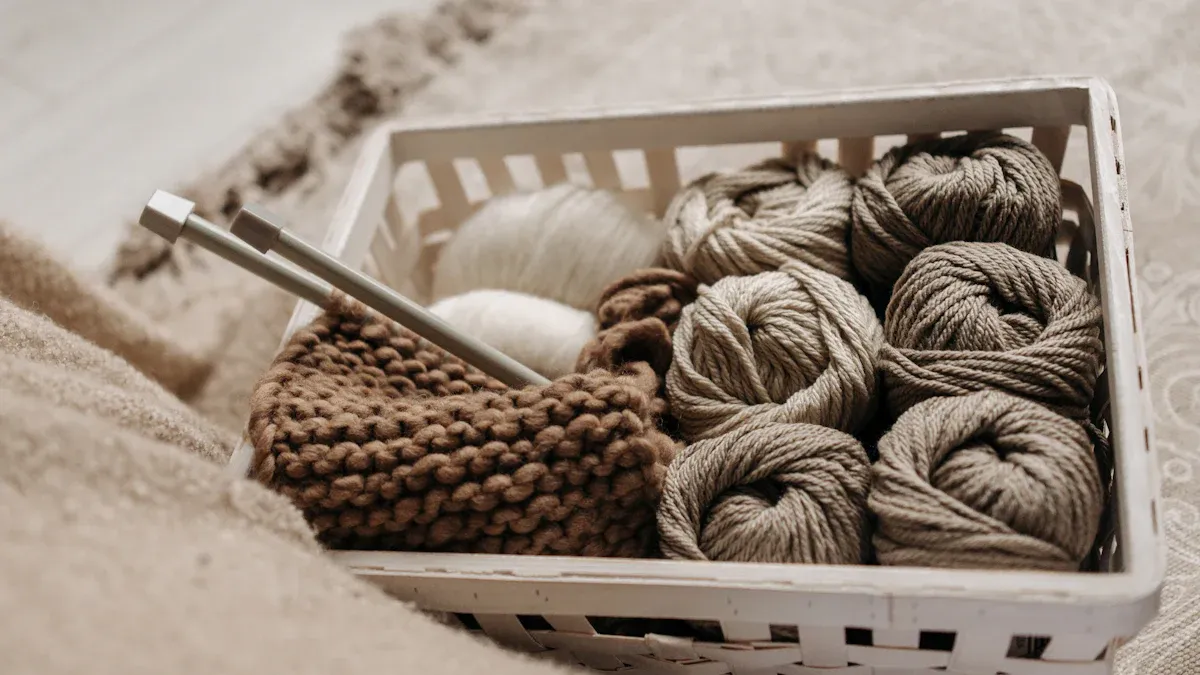
Environmental Impact
Luxury fibers like alpaca, mohair, and cashmere affect nature in different ways. Alpaca is the most eco-friendly choice. Alpacas eat grass gently and do not hurt plant roots. This stops soil from washing away and keeps grasslands healthy. Alpaca farms use less water and fewer chemicals than other fibers. Mohair comes from Angora goats. It uses more water and can hurt the soil if farms are not careful. Some farms use chemicals and do not always protect plants and animals nearby. Cashmere has the biggest impact on the environment. Many goats eat too much grass, which ruins the land and turns it into desert, especially in Mongolia. Cashmere also needs lots of water and chemicals to make the fiber ready.
Fiber Type | |
|---|---|
Cashmere | Too many goats, ruined land, lots of water, chemical waste |
Mohair | Uses water, soil loss, hurts plants and animals, uses chemicals |
Alpaca | Gentle eating, little water, few chemicals, small impact |
Picking alpaca helps save the land and uses less water and chemicals. Mohair and cashmere need careful farming to avoid hurting nature.
Ethical Sourcing
Ethical sourcing means caring for animals, workers, and the earth. Many brands now use special labels to show they follow good rules. The Responsible Mohair Standard (RMS) and Responsible Alpaca Standard (RAS) check how animals and land are treated. The Sustainable Fibre Alliance (SFA) helps make cashmere better for nature. Other labels include Fairtrade, Global Organic Textile Standard (GOTS), and OEKO-TEX Standard 100. These labels help buyers pick yarns made with care for animals and people.
Fairtrade: Makes sure workers get fair pay and safe jobs.
GOTS: Checks that fibers are organic from farm to factory.
OEKO-TEX: Makes sure there are no bad chemicals.
RMS/RAS/SFA: Focus on animal care and healthy land.
Brands should tell people how they get their fibers and show proof of their labels. Asking for samples and checking where fibers come from helps make sure they are good and fair. Knowing where fibers come from helps people trust luxury knitwear brands.
Comprehensive Sourcing Guide: Matching Luxury Fibers to Knitwear Needs and Applications
Knitwear Types
The fiber you pick depends on what you want to make. Each fiber gives sweaters, scarves, and accessories different qualities. Natural luxury fibers like cashmere, merino wool, and alpaca feel soft and warm. They also let air move through, so you stay comfy. Wool, including merino, is stretchy and warm. This makes it good for sweaters, scarves, and socks. Cotton is strong and lets your skin breathe. It works best for clothes you wear in warm weather. Synthetic fibers like acrylic and nylon are tough and easy to wash. But they do not feel as fancy as natural fibers. Yarn thickness is important too. Thick yarns make chunky scarves. Thin yarns are better for light sweaters.
Knitwear Type | Recommended Luxury Fibers | Yarn Weight / Gauge | Key Considerations |
|---|---|---|---|
Premium Sweaters | Cashmere, Merino Wool, Alpaca | Fine to Mid-Gauge | Softness, warmth, breathability |
Scarves | Cashmere, Merino Wool, Alpaca | Bulky/Chunky | Warmth, texture, winter use |
Lightweight Sweaters | Fine Merino Wool, Cotton | Fine-Gauge | Breathability, mild climates |
Heavyweight Sweaters | Thick Wool, Cashmere Blends | Chunky Gauge | Maximum insulation, cable knits |
Accessories | Cashmere, Alpaca, Wool | Fine to Mid-Gauge | Softness, lightweight, special projects |
Picking the right fiber helps clothes feel good and last longer.
Everyday vs. Luxury
Clothes you wear every day need strong fibers that are easy to clean. Wool, cotton, and acrylic are tough and not too expensive. Acrylic does not shrink or fade, so it is good for things you wash a lot. Cotton is soft and lets air in, but it can lose its shape. Fancy knitwear uses special fibers like high-quality merino wool, cashmere, silk, and mohair. These fibers feel extra soft and look nice, but you must wash them gently. Mohair and silk make clothes shiny and pretty. Merino wool is special because it works for both everyday and fancy clothes. It is soft and strong, so you can use it for many things.
Practical Tips
Shop at local yarn stores and look for sales.
Join newsletters to hear about deals and new yarns.
Check reviews and read about the yarn before buying.
Remember that hand-dyed yarns can have color changes.
Buy enough yarn from one batch to keep colors the same.
Order samples to see if the yarn feels right for you.
Look for labels like GOTS, OEKO-TEX, and Fair Trade to make sure yarn is made fairly.
Try blended yarns to get both softness and strength.
Use leftover yarn for other projects or recycle it.
Wash luxury fibers gently and let them dry in the air.
Picking the best fiber for each project means thinking about comfort, strength, care, and how it affects the planet. Smart choices help make better clothes and happier people.
Every fancy fiber has something unique to offer. Mohair is known for its shiny look and strong feel. It can also be good for the planet. Cashmere is super soft, but you have to be careful about where it comes from. Alpaca keeps you warm, lasts a long time, and is gentle on nature. The table below shows what each fiber does best:
Fiber | Best For | Key Benefit |
|---|---|---|
Mohair | Lasting knits | Shine, resilience |
Cashmere | Luxury garments | Softness, warmth |
Alpaca | Everyday, outdoor | Strength, comfort |
Brands should talk to suppliers and fiber experts. This helps them pick the right fiber for their needs. Knowing more about fibers helps people make better choices when buying yarn.
FAQ
What makes mohair different from cashmere and alpaca?
Mohair comes from Angora goats. It feels smooth and looks shiny. Cashmere feels softer and comes from cashmere goats. Alpaca fiber feels warm and strong. Each fiber has a unique look and feel.
How should someone care for luxury knitwear?
Hand wash luxury knitwear in cool water. Use mild soap. Lay the item flat to dry. This keeps the fiber soft and helps it last longer. Avoid wringing or twisting the fabric.
Are luxury fibers like alpaca and mohair good for sensitive skin?
Alpaca works well for sensitive skin because it has no lanolin. Mohair feels less itchy than regular wool. Both fibers suit people who want soft, comfortable clothing.
Why do some luxury yarns cost more than others?
Price depends on rarity, how hard it is to collect the fiber, and the care needed for animals. Cashmere and vicuña cost more because they are rare and take more work to produce.
Can luxury yarns be blended with other fibers?
Yes, many brands blend luxury fibers with wool, silk, or acrylic. Blending can add strength, lower cost, or change how the fabric feels. Blends often make knitwear easier to care for.



